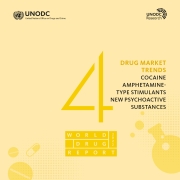Use of sustained release dextroamphetamine for the treatment of stimulant use disorder in Canada
For people with opioid use disorder who are not responding to oral opioid agonist treatment, evidence supports the effectiveness of injectable opioid agonist treatment with injectable hydromorphone (an opioid analgesic) and diacetylmorphine (pharmaceutical grade heroin). While this treatment is effective at reducing illicit opioid use, concurrent cocaine use is prevalent. Dextroamphetamine (a central nervous system stimulant) has been found to be a safe and effective treatment for cocaine dependence among people receiving injectable opioid agonist treatment in Europe.
We present the first report of dextroamphetamine prescribing offered for the treatment of stimulant use disorder among a patient receiving iOAT outside of a clinical trial. This case report can be used to inform clinical practice in the treatment of cocaine use disorder, an area where interventions are currently lacking.
Case presentation
Dextroamphetamine was prescribed to a 51-year-old male who was diagnosed with concurrent opioid and stimulant use disorder in an injectable opioid agonist treatment clinic in Vancouver, Canada. He reported smoking crack cocaine daily for more than two decades and was experiencing health consequences associated with this use. He presented to his routine physician visit with the goal of reducing his cocaine use and was prescribed dextroamphetamine for the treatment of stimulant use disorder. After 4-weeks the patient was tolerating the medication with no observed adverse events and was achieving his therapeutic goal of reducing his cocaine use.
Conclusions
Dextroamphetamine can be prescribed to support patients with stimulant use disorder to reduce or stop their use of cocaine. The case demonstrated that when dextroamphetamine was prescribed, a significant reduction in cocaine use was experienced among a patient that had been regularly using cocaine on a daily basis for many years. Daily contact with care for the opioid medication promoted adherence to the stimulant medication and allowed for monitoring of dose and tolerance. Settings where patients are in regular contact with care such as oral and injectable opioid agonist treatment clinics serve as a suitable location to integrate dextroamphetamine prescribing for patients that use illicit stimulants to reduce use and associated harms.
Read the article in full AT THIS LINK.










